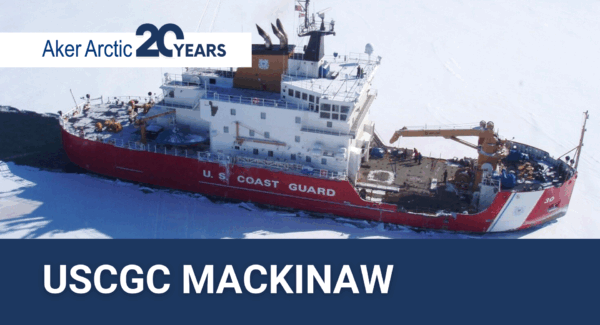Service vessel for wind farms in ice areas
A pioneering service operation vessel, tailored for wind parks and optimised for both ice and open water conditions, is set to launch soon.

To avoid downtime in electricity production from offshore wind farms, suitable vessels for service and repair work are an essential part of the investment. Each day a turbine is out of order may cause losses of up to 20,000 euros.
Given the plans for new offshore farms in the Baltic Sea, the ability to access these farms also during winter becomes crucial. Aker Arctic is therefore developing a service vessel, which is optimised for both ice and open water conditions.
Current designs depend on the weather
In open water areas where turbines are already in operation, two main types of vessels are employed: Service Operation Vessels (SOV) and Crew Transport Vessels (CTV), each serving distinct purposes. For constructing and installing wind farms, many other types of vessels are also needed.
SOVs are larger vessels, particularly equipped with a motion compensated gangway, allowing workers to walk safely between the turbine and the vessel with tools and spare parts, to conduct repairs and service work. CTVs are fast and light vessels used for quick visits with small amounts of people, weather permitting.
However, neither of these vessel types traditionally possess ice strengthening or icebreaking capabilities. A small vessel also encounters more weather restrictions as waves and wind conditions result in uncomfortable vessel behaviour hindering the vessel’s possibilities of reaching the farm safely.
Hence, access to turbines during bad weather is not possible and access during the ice season is only possible if a suitable tugboat is available for occasional emergency visits. In harsh ice conditions a tugboat may not be enough.
Reliability to reach turbines
The background work for a Baltic Sea SOV has been completed and initial outline design drawings are developed.
“The next step is to develop a concept design of the vessel, which will take approximately three months,” says chief designer Lars Lönnberg.
A Baltic Sea SOV differs from an icebreaker in several ways; the size can be smaller and the speed in heavier ice conditions slower, as it is not assisting any other vessels.
According to Lönnberg, the ability to break 1-metre level ice at a speed of 2 knots is deemed sufficient for Baltic Sea conditions, even in the northern parts. More important than speed in level ice is the reliability to reach turbines in all prevailing conditions.
Seakeeping improves safety
While icebreaking power is essential, the importance of seakeeping capabilities to reduce downtime is equally significant. Apart from the winter months, the vessel will operate most of the time in open water, and a safe transit in challenging weather conditions is necessary. Calm vessel movements, even in high waves, are vital in ensuring passenger comfort.
The inclusion of a motion compensated covered gangway is a fundamental part of the crew safety. Especially when there are waves, it is the only secure way to reach the turbines from the vessel. An additional significant challenge is maintaining the vessel’s position in dynamic ice fields.

Tailored concept
The SOV concept design will be further tailored for every area, as requirements are quite different depending on where in the Baltic Sea a wind farm is situated.
“Optimizing the service vessel design is key to enhancing a wind farm’s output reliability and ensuring comprehensive safety for all stakeholders. It includes keeping the vessel’s capital and operation costs small, i.e. to avoid over-design. This is important for the service crew, investors as well as individual electricity clients,” Lönnberg highlights.
Text: Catarina Stewen

